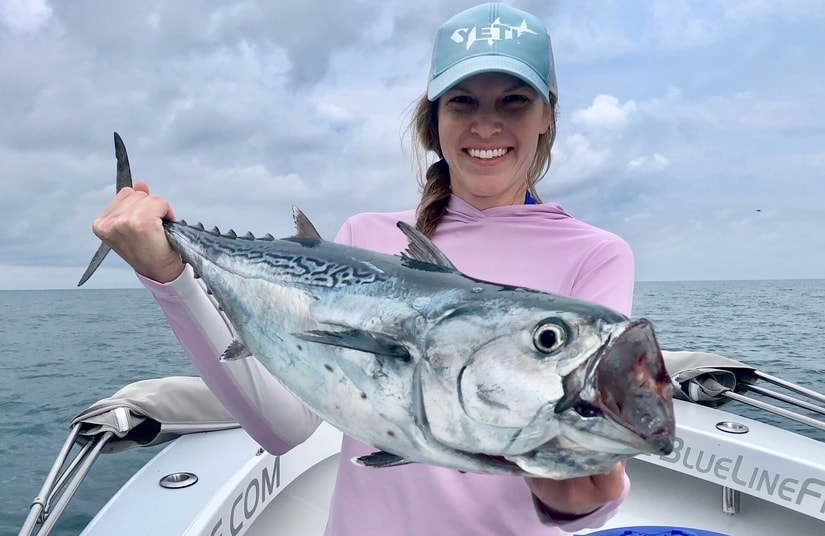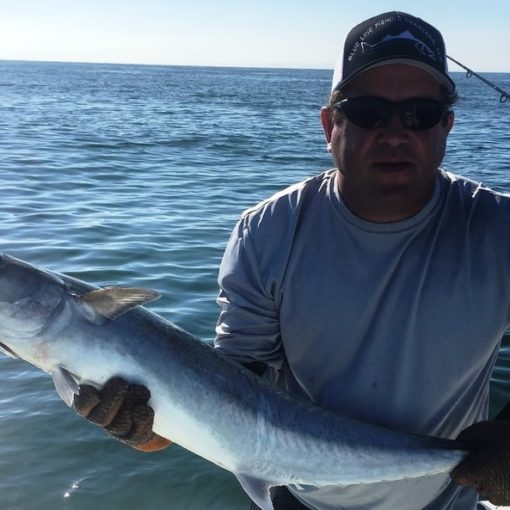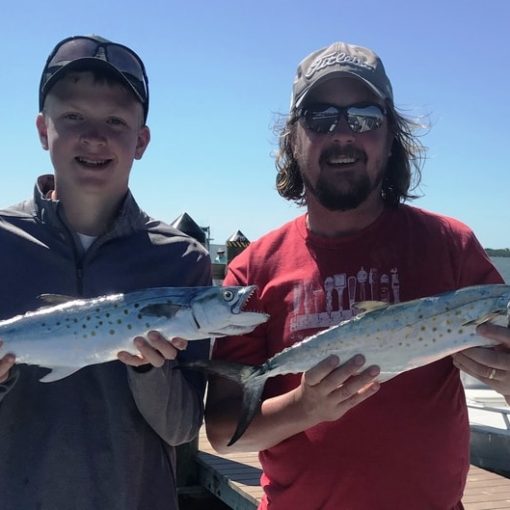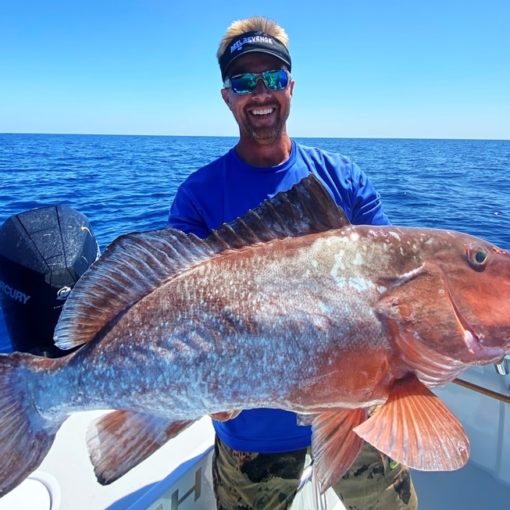Euthynnus alletteratus, common name bonita, bonito, false albicore, or little tunny, is a small, abundant member of the tuna family. Due to its dark, strongly flavored oily flesh, bonita is not generally considered good eating, and is more commonly used as bait. However, it is popular in some parts of the world, and makes good sushi. The devil is in the preparation! Bonita needs to be bled well and iced immediately after capture for best results.
Bonita live in a wide range of warm tropical inshore and offshore areas of the Mediterranean and Atlantic. They like to collect in and around structures like jetties, sandbars, points and inlets where their favorite foods are found. They’re also a schooling fish, noted for living in incredibly large schools. Some of these schools are around 2 miles long! It also appears the schools are based on fish size rather than specific species.
Identifying Bonita
Bonita are an unusually marked fish, which distinguishes them from several other similar looking species. Like most tuna, they have a metallic blue-green back with silvery sides and white underbelly. However, what sets them apart is the clearly defined patch of distinctive dark stripes and lines along their back. This patch starts at the middle of their first dorsal fin and runs down their back to the tail. They also have a handful of small dark spots between their pelvic and pectoral fins. These spots are unique to bonita. Another distinctive feature are the small finlets behind their anal and second dorsal fins.
Bonita’s Unique Anatomical Features
In addition to their markings, bonita have some other unusual anatomical features. They don’t have an air or swim bladder. This structure, found in most bony fish species, fills with gas/air and allows the fish to control its buoyancy. Bonita use their pectoral fins instead to do this, and must constantly stay moving. If they stop swimming, they sink. Fortunately, they’re equipped with a strong compact streamlined body well suited for continuous action.
Bonita’s anatomical differences don’t stop there! The left and middle lobes of their liver are much shorter than the right lobe. They have a long sac-like stomach that runs nearly their entire length. Conversely, their intestine is quite short and straight instead of looped, with clearly defined sections differentiated by color and diameter. The trelliswork along their ventral spinal column, which encloses the major ventral blood vessel, is also different to other tuna species.
Bonita Spawning And Growth
Bonita spawn over late spring, summer and fall with peak spawning happening during July and August. Females can release nearly 2 million eggs a season in multiple spawnings. Like all tuna species, they’re broadcast spawners. The males release sperm at the same time and fertilization happens in the water. The eggs float and produce larvae around 24 hours post fertilization. As the larvae grow, they quickly start to take on their adult shape. However, it will be around 3 years before they reach reproductive maturity. At that point, they’re typically about 15 inches long.
Mature bonita average 35 inches and weigh around 15 pounds, although bigger specimens have been found. They predominantly feed on other smaller fish and crustaceans, with squid and gastropods making up the balance of their diet. The size of their prey is directly proportional to their own size – the bigger they are the bigger their prey.
Bonita Fishing Charter Captiva Island, Cape Coral, Fort Myers And Sanibel Island
Bonita are very popular with recreational and sports anglers because they are hard fighters on the hook. They also have an amazing turn of speed and can reach 40 mph once they get going. It’s relatively easy to find them too. Those massive schools are hard to hide, and they often attract birds when feeding. Alternatively, the latest Cape Coral fishing report will usually provide you with good information about where they’re biting best.
For your custom bonita fishing charter, Cape Coral based Blue Line Fishing Charters knows where the best fishing spots are. We are also fully up to date with the latest regulations about catch limits, sizes and various other legalities for all Florida fish species.





